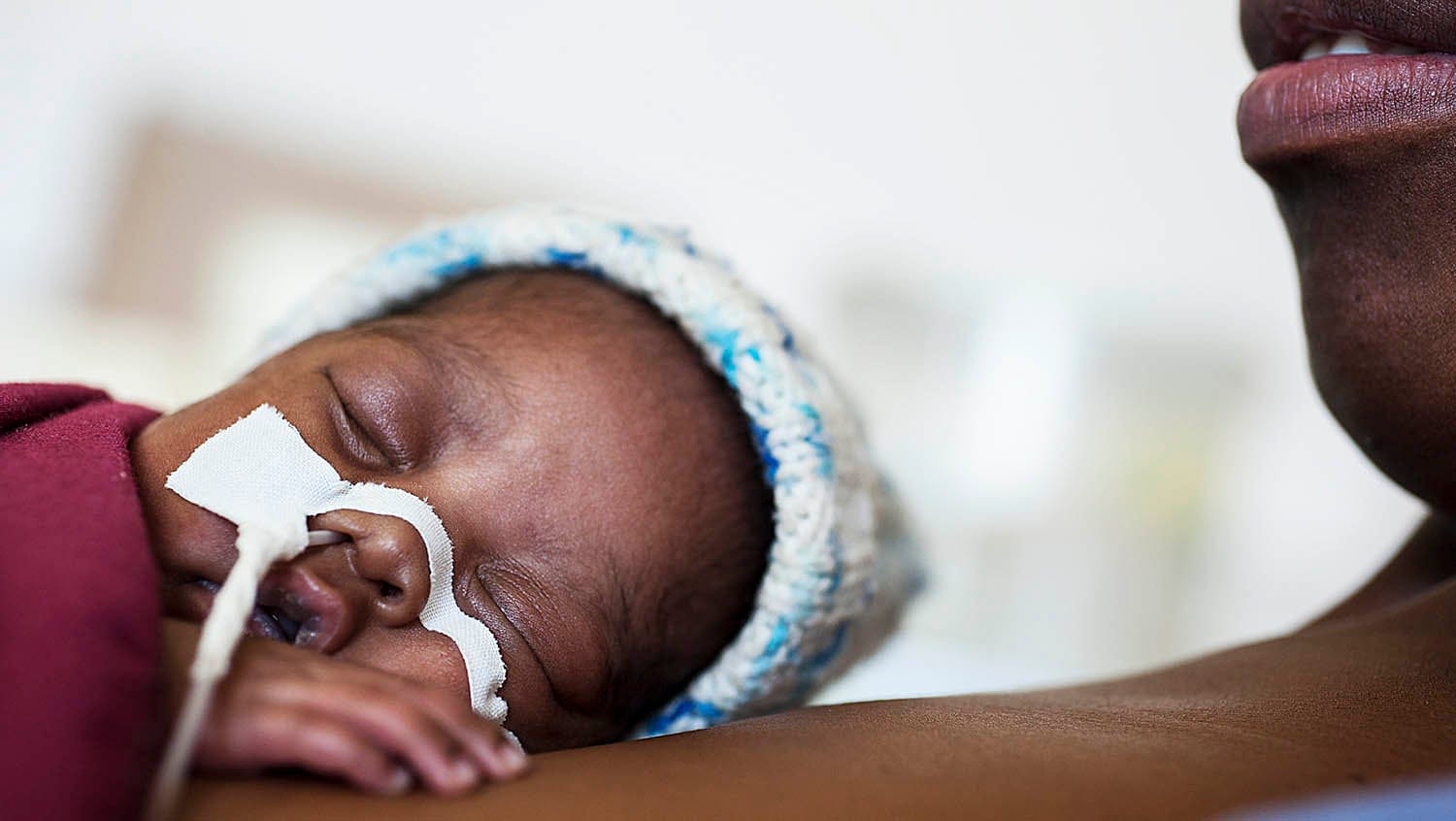Tackling Disparities in NICU Breastfeeding Rates by Meeting Social Needs
June 25, 2019

Getty Images
Mother's milk brings a range of health benefits, including improved brain development and a reduced risk of serious illness and infection. Providing milk can pose a challenge for any new mom, but the challenge is even greater for the mothers of very low birth weight (VLBW) infants — those born weighing 3.3 pounds or less, and usually before 30 weeks of gestation. These tiny and vulnerable babies can spend weeks or months in the neonatal intensive care unit (NICU), creating serious barriers to mothers’ pumping and feeding of their own milk.
Mother’s milk brings a range of health benefits, including improved brain development and a reduced risk of serious illness and infection. Providing milk can pose a challenge for any new mom, but the challenge is even greater for the mothers of very low birth weight (VLBW) infants — those born weighing 3.3 pounds or less, and usually before 30 weeks of gestation. These tiny and vulnerable babies can spend weeks or months in the neonatal intensive care unit (NICU), creating serious barriers to mothers’ pumping and feeding of their own milk.
Research has shown that providing mother’s milk for VLBW babies, as with all babies, varies by maternal race and ethnicity. Black and Hispanic mothers are less likely than white mothers to be providing milk at the time of their infant’s hospital discharge. But less is known about the specific reasons for these racial and ethnic disparities, which are important for the way they mirror disparities in longer-term health outcomes.
Now, the evidence is growing that these disparities are driven by the social determinants of health. In a new study published in Pediatrics, researchers found that racial and ethnic disparities in mother’s milk among VLBW infants were not seen early in the NICU stay, while the mothers participated in early hospital-based breastfeeding support practices. Rather, the disparities emerged only after week three, suggesting that factors outside the hospital play a key role.
“A lot of people presume there’s a difference in intent to breastfeed among these moms,” says Meg Parker, MD, MPH, a neonatologist and researcher at Boston Medical Center (BMC). “Whether they’re black, white, Hispanic, we’ve found that the intent is all very, very high — even higher than in moms of healthy-term births. But they have to deal with all the other things going on in their lives.”
Breastfeeding, social factors, and the best of intentions
The new study began as a quality improvement project in Massachusetts, known as the Human Milk Initiative. Parker and her colleagues led a series of interventions at 10 hospitals that were designed to improve mother’s milk provision at discharge by addressing key process improvements around prenatal human milk education, skin-to-skin care in the first month of life, and first milk expression within six hours of birth.
The researchers saw improvements on all of these measures across all racial and ethnic groups, but those improvements weren’t enough to prevent the racial disparities in milk provision that emerged after the first three weeks of hospitalization. By the time of discharge, just 53% of black mothers and 48% of Hispanic mothers were providing any mother’s milk, compared to 69% of white mothers.
Interviews with black and Hispanic mothers later revealed the day-to-day challenges that interfered with providing milk while their baby remained in the NICU. These mothers faced difficulty maintaining frequent breast pumping and performing skin-to-skin contact because they were juggling frequent travel to and from the hospital with the demands of work and caring for other family members.
In some cases, mothers were already required to be back at work in order to hold onto their jobs, or were stretched thin by caring for other children without sufficient supports at home. Transportation costs or logistics were also a major barrier. Parker cites as an example a mother who missed patient-centered rounds with the full medical care team because she couldn’t afford the parking garage and had to move her car.
Future focus: Quality improvement with an equity lens
In addition to staff training and patient education, simple low-cost interventions could make all the difference for NICU families, Parker says. Assisting with $10 vouchers for parking or meals, for example, and having a child life specialist available to play with siblings while the mother pumps or breastfeeds are small interventions that acknowledge inequities and can decrease the barriers to visitation. Ultimately, they could boost mother’s milk provision rates and family competence in preterm infant care after discharge.
“A lot of people presume there’s a difference in intent to breastfeed among these moms. Whether they’re black, white, Hispanic, we’ve found that the intent is all very, very high.”
– Meg Parker, MD, MPH
Facetime or other virtual technology could also help close the gap when parents can’t be present at the NICU. AngelEye video technology, for example, allows families to see their baby when they can’t be at the hospital, fostering a sense of closeness and allowing the families to observe and learn while nurses provide care.
Family-centered care for breastfeeding
With a new Kellogg Foundation grant of nearly $800,000, Parker’s group is poised to expand its work. The plan now is to repeat the Human Milk Initiative project in other states with different populations and needs, and to conduct a statewide project in Massachusetts focused on understanding and reducing disparities in family-centered care.
Family-integrated care models, which involve the full integration of families in the care of babies in the NICU, have shown considerable health benefits in randomized control trials from other research teams, and are seen as a promising option for reducing disparities, Parker notes. Parents will ultimately do better when their child comes home if they’re able to learn more from hospital staff.
But to reach the desired outcomes and reduce racial disparities, even these models will need to address basic barriers like the costs of visitation and the need for child care.
“If we can get families more integrated into the care, we can help them break down some of these barriers. It’s going to improve breastfeeding,” Parker says. “But none of this work is going to be at all helpful unless we bridge some of these gaps and help moms actually get to the NICU.”


